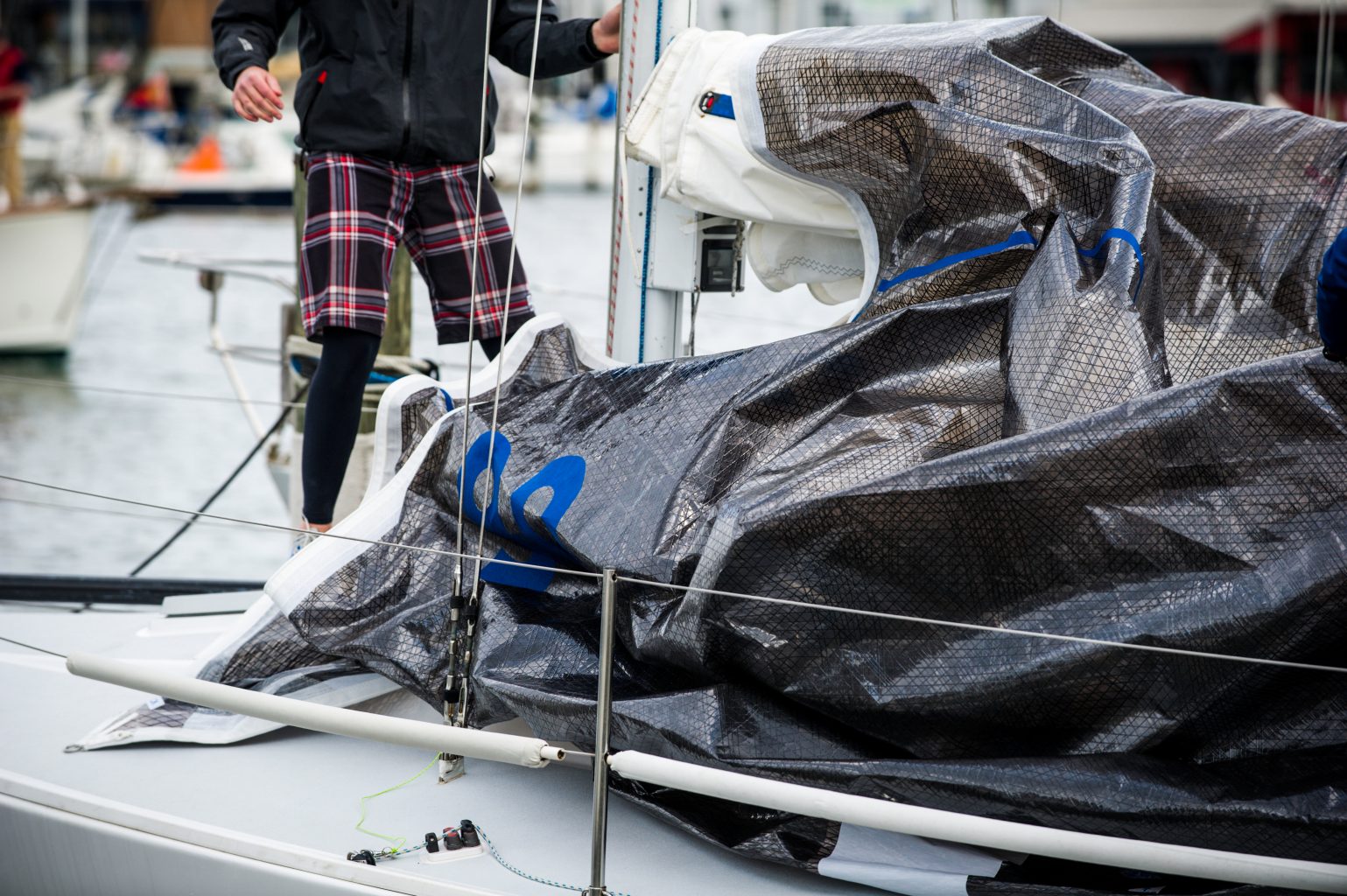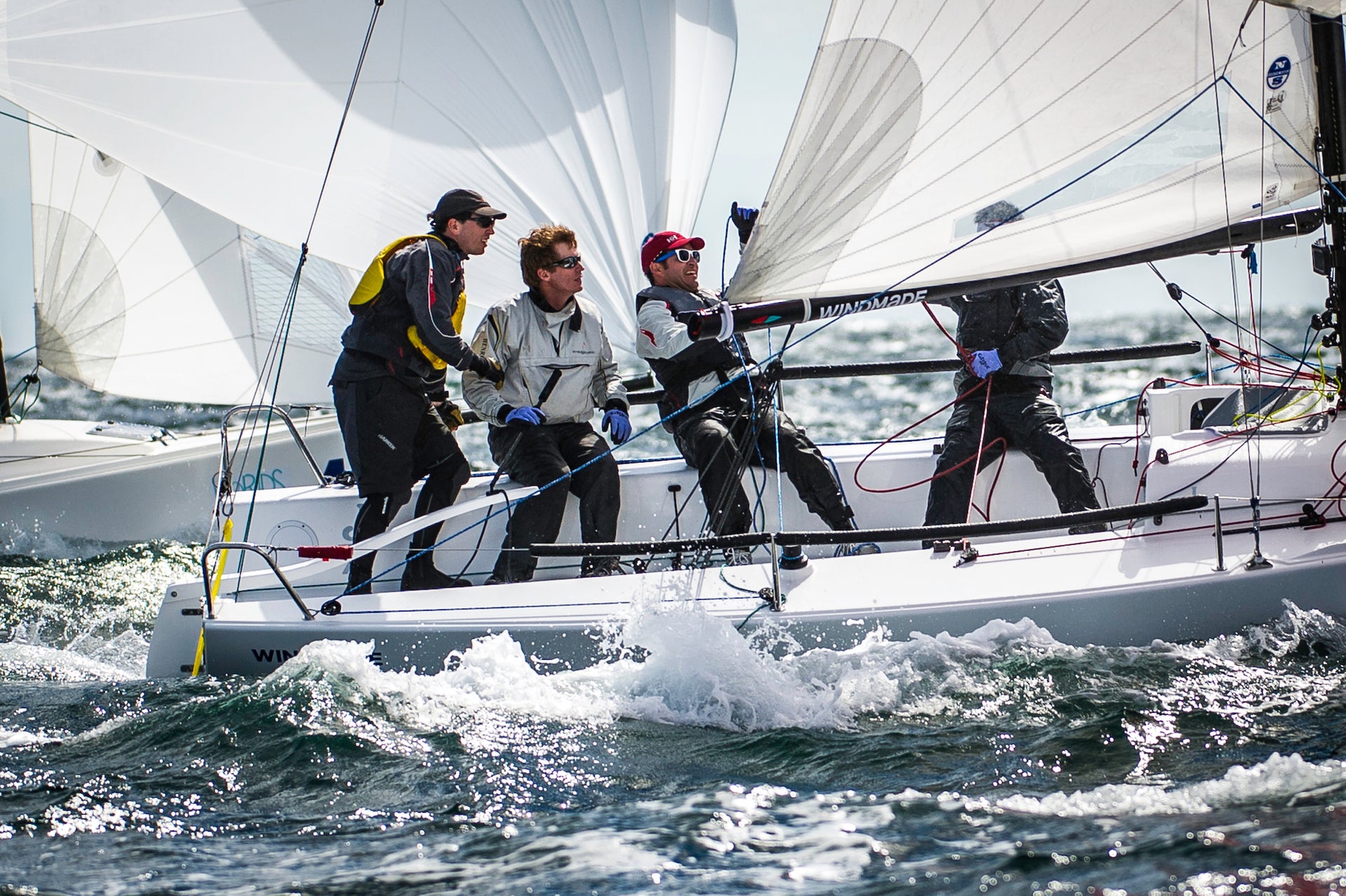PRE-RACE PREPARATION: ARE YOU READY?
From sail selection to rig tune, a lot happens before you leave the dock. Follow these tips to help your team get race-ready before casting off.
1. Building a Crew
It is good to have the right number of crew onboard, but if no one can do bow, you aren’t in great shape! Ask yourself, do you have the key roles covered? Know who is responsible for what, and keep a roster of crew contacts on the back burner – these are the people you’ll call when someone can’t make it. Help your team by networking to fill open spots, spread the word and confirm new members as early as possible before an event. (Tip – try out a free service like Google Forms to get needed information, such as availability or gear requirements, organized and in a central place).

2. Weather & Sail Selection
Ask your navigator or tactician to inform the crew a few days out on what the forecast is expected to be. Helpful information about courses, start time, and how soon you want to get out on the water are important so everyone is on the same page. Include what time to meet at the boat (not the coffee shop) . Setting a specific dock call time will help the crew plan accordingly and get their gear and spare equipment onboard so dock-out time isn’t delayed.
The weather forecast and course information will also determine your sail choices for the day. Whether windward – leeward courses, round the cans or offshore distance racing is in your future, consult with the skipper, tactician and navigator to make a collective decision on the day’s inventory. Often, the biggest impact on sail power is the choice of genoa. Sail selection can be a tough call and North Sails is happy to help, so don’t hesitate to ask your local contact. Each sail has been designed for a specific range of wind strength and sailing angle, due to its size, weight or structural capacity (DPI). Batten up the jibs you will take for the day and stow the extra sails onshore in a safe, dry place. Extra sails are extra weight, so crucial decisions need to be made prior to leaving the dock.
Meanwhile, One Design sailors must remember class rules – Fast 40 rules allow sail changing each day, while J/109 rules require all sails to be carried. IRC events require you to have the same sails on board from the start of the event to the finish, and PHRF and ORR may also have separate restrictions.
3. Rig Setup
Tuning your rig is not a dark art but it is a whole job in itself. You will need to adjust your rig as the conditions change to get the best performance from it. Find out if your class, or boat, has a tuning guide, and follow it! As your team gets more experienced, practice fine tuning for your boat and see what feels fast. Work toward finding that little extra speed, it will make all the difference. Always carry a wet notes pad to make notes onboard. Record everything from the conditions, rig tune, and fast trim, and be sure to include TWA and TWS for reference. After racing, revert your rig back to base settings overnight so you can start with a clean slate the next day.

4. Leave time to Warm – Up
Maintaining communication with the crew on when to meet and being prepared can save you time so you can get out early and practice techniques, decide on which sails to use, and help the skipper get an idea of how long it takes to get the boat up to full speed off the line. Being able to sail around prior to the first race will help the tactician determine lifted tacks, where the holes are on the race course, and get the crew coordinated to get “in the groove” and up to full speed. Getting out there early will also allow for a quick snack and hydration before the warning signal. Something that can easily be forgotten, food and hydration helps focus and energy levels, which are key to doing well.

5. Notes on Sail Care
First rule of thumb, never walk/stand/or lay on sails. This crushes the materials and is devastating to your boatspeed! Just like an engine, your sails must be treated well and taken care of as you depend on them.
When putting sails onboard, make sure they are properly flaked so that the bowman can easily hook them up and hoist them. Although a leech flake gives the best possible flake with the battens in, the luff flake is best for your teammate to prevent the luff tape from tearing during the hoist.

When hoisting the mainsail, always slowly “back down” or reverse. This will take the apparent wind out of the sails, reduce flapping, and help prolong the life of the sail. This is a great method to practice, added bonus is it will clear any seaweed from your keel to limit drag. Extra precautions need to be taken in heavier air.
When hoisting the jib, you always want to do it when you are head to wind, or when you are dead-downwind. Never hoist your jib on a reach. Not only is it difficult for the guy on the halyard, it is not good for the sail if it gets dragged over the lifelines. Make sure there is slack in the sheets to avoid any friction on the hoist.

After sailing, it is a good habit to ease the batten tension. Sails tend to shrink a bit overtime, so tension will increase. Roll or flake your sails for storing , and lay them on a flat surface whenever possible.
Taking care of your upwind sails is just as important as tending to your kites. Make sure your spinnakers are dry and remove any luff cables before storing (tip: mark the cable where the luff should end to help when you go to use them next time). Flake the furling sails to make it easier on yourself, especially if it’s a top down furl. If laying a out to dry, make sure it is secured at the head and tack so they don’t escape!
6. Debrief
Often the best way to prepare for the next race (or the next regatta) is to review the race you just finished. This can happen on the way in, or upon return to the dock. What worked, didn’t work during the race? Review upwind and downwind tactics and boat handling. How can maneuvers be smoother, or boat speed be improved? For some crews, the discussion may happen organically. For others, you may want to develop a post-race checklist, or debrief outline, to encourage communication and keep the crew on the same page.



























